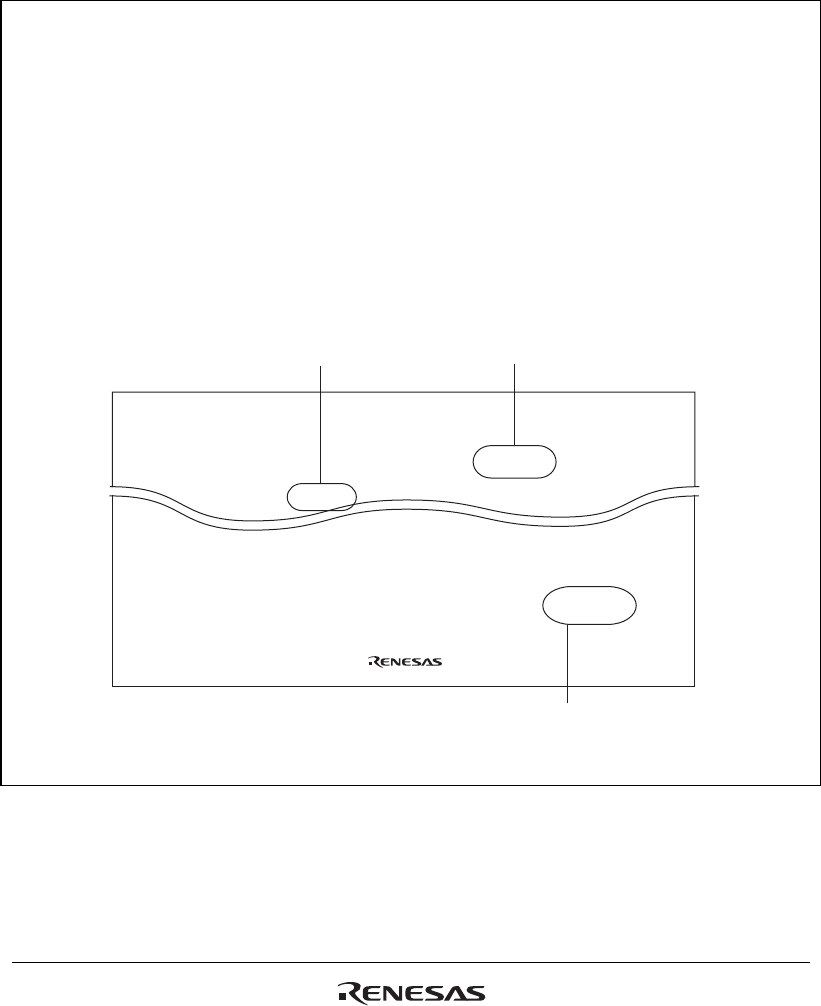
Page viii of xl R01UH0134EJ0400 Rev. 4.00
Sep 24, 2014
Description of Numbers and Symbols
Aspects of the notations for register names, bit names, numbers, and symbolic names in this
manual are explained below.
CMCSR indicates compare match generation, enables or disables interrupts, and selects the counter
input clock. Generation of a WDTOVF signal or interrupt initializes the TCNT value to 0.
14.3 Operation
The style "register name"_"instance number" is used in cases where there is more than one
instance of the same function or similar functions.
[Example] CMCSR_0: Indicates the CMCSR register for the compare-match timer of channel 0.
In descriptions involving the names of bits and bit fields within this manual, the modules and
registers to which the bits belong may be clarified by giving the names in the forms
"module name"."register name"."bit name" or "register name"."bit name".
(1) Overall notation
(2) Register notation
Rev. 0.50, 10/04, page 416 of 914
14.2.2 Compare Match Control/Status Register_0, _1 (CMCSR_0, CMCSR_1)
14.3.1 Interval Count Operation
(4)
(3)
(2)
Binary numbers are given as B'nnnn (B' may be omitted if the number is obviously binary),
hexadecimal numbers are given as H'nnnn or 0xnnnn, and decimal numbers are given as nnnn.
[Examples] Binary: B'11 or 11
Hexadecimal: H'EFA0 or 0xEFA0
Decimal: 1234
(3) Number notation
An overbar on the name indicates that a signal or pin is active-low.
[Example] WDTOVF
Note: The bit names and sentences in the above figure are examples and do not refer to
specific data in this manual.
(4) Notation for active-low
When an internal clock is selected with the CKS1 and CKS0 bits in CMCSR and the STR bit in
CMSTR is set to 1, CMCNT starts incrementing using the selected clock. When the values in
CMCNT and the compare match constant register (CMCOR) match, CMCNT is cleared to H'0000
and the CMF flag in CMCSR is set to 1. When the CKS1 and CKS0 bits are set to B'01 at this time,
a f/4 clock is selected.


















